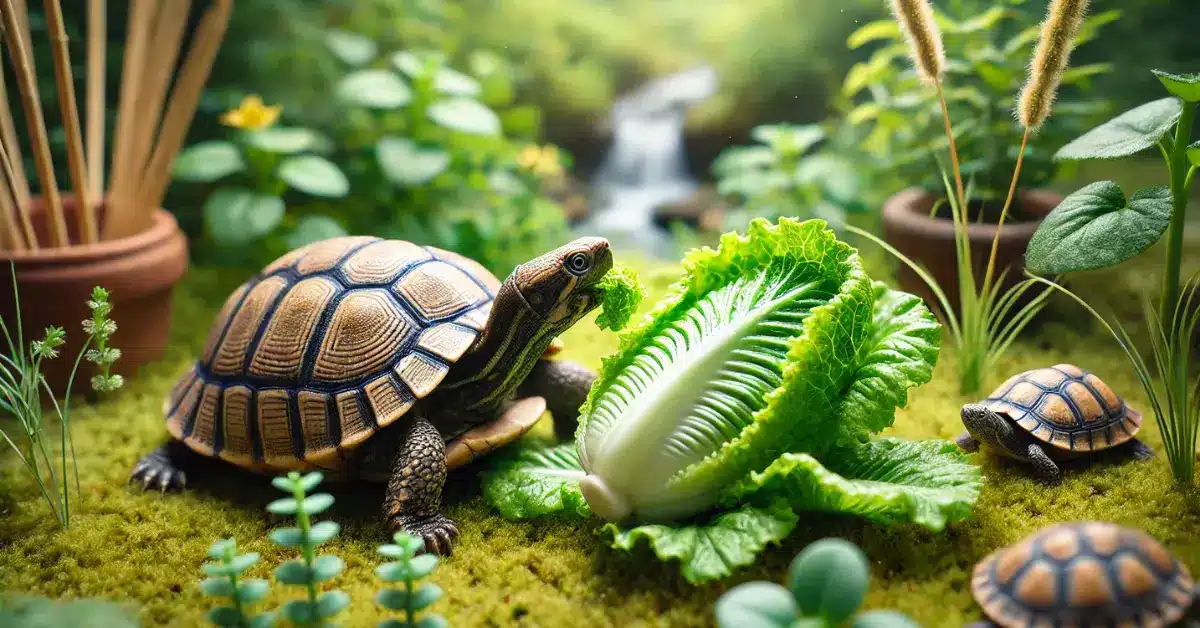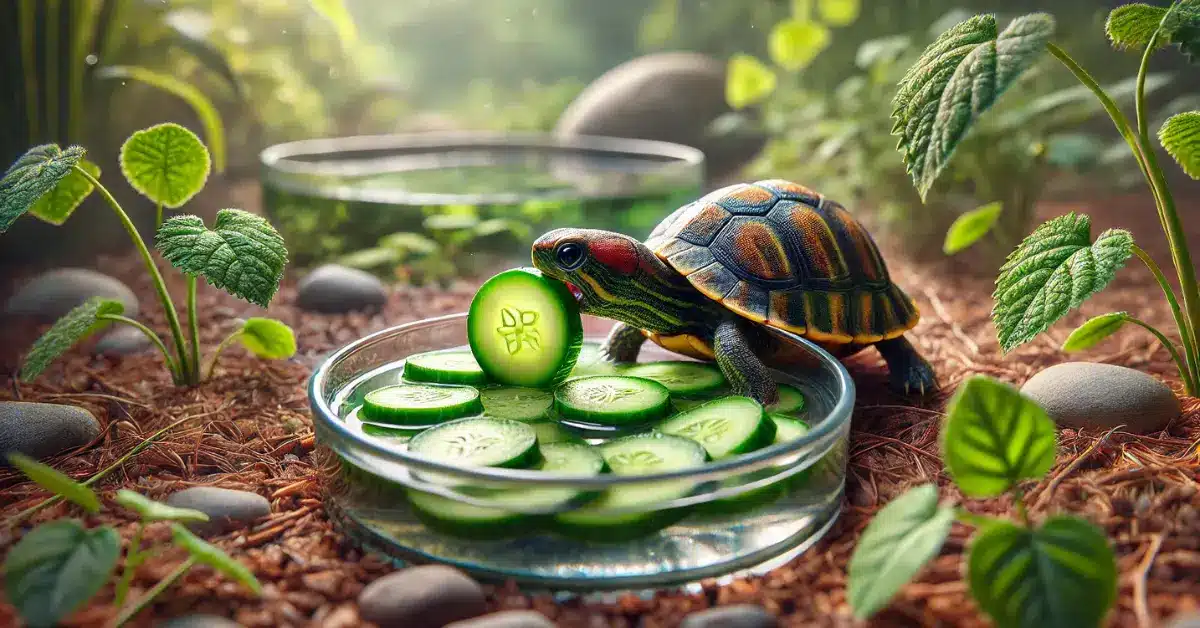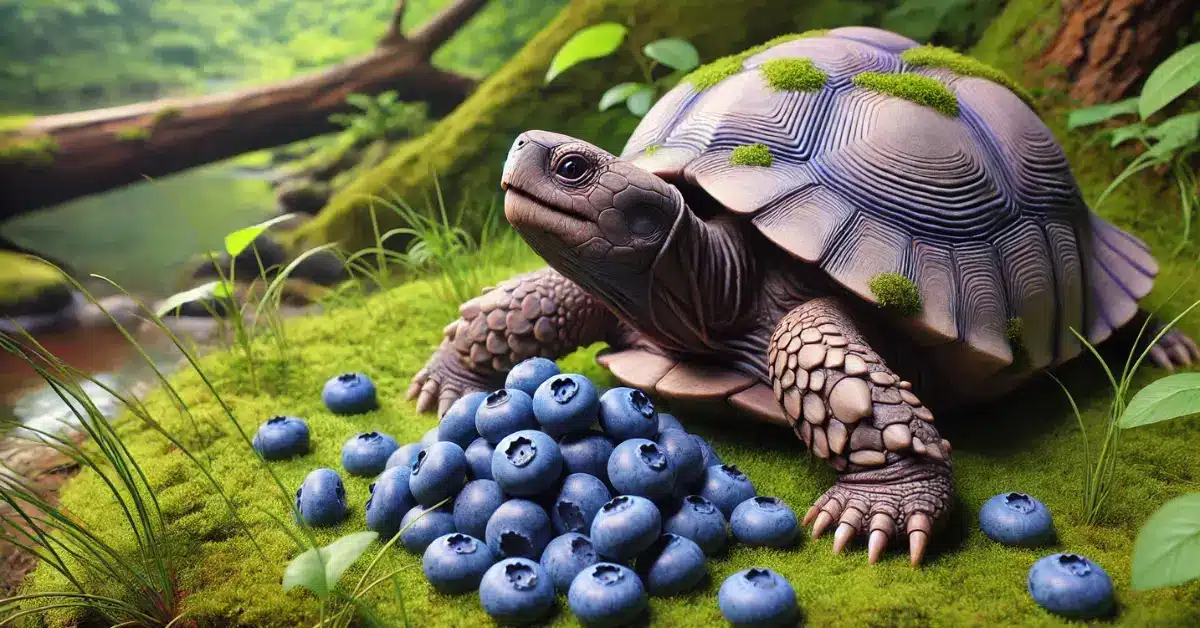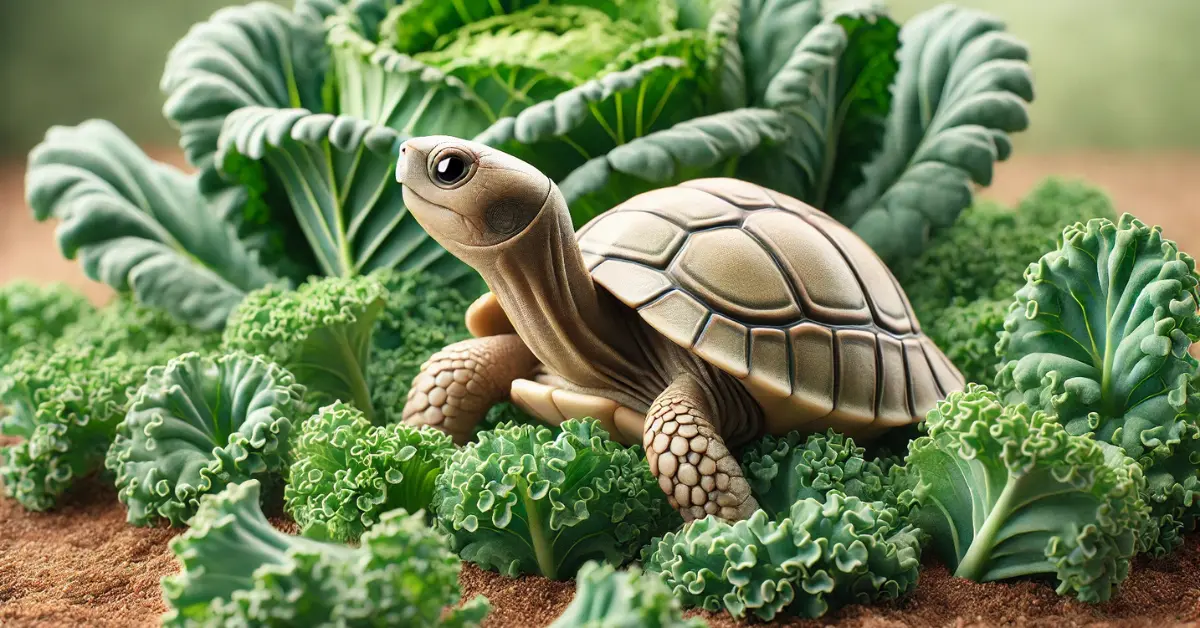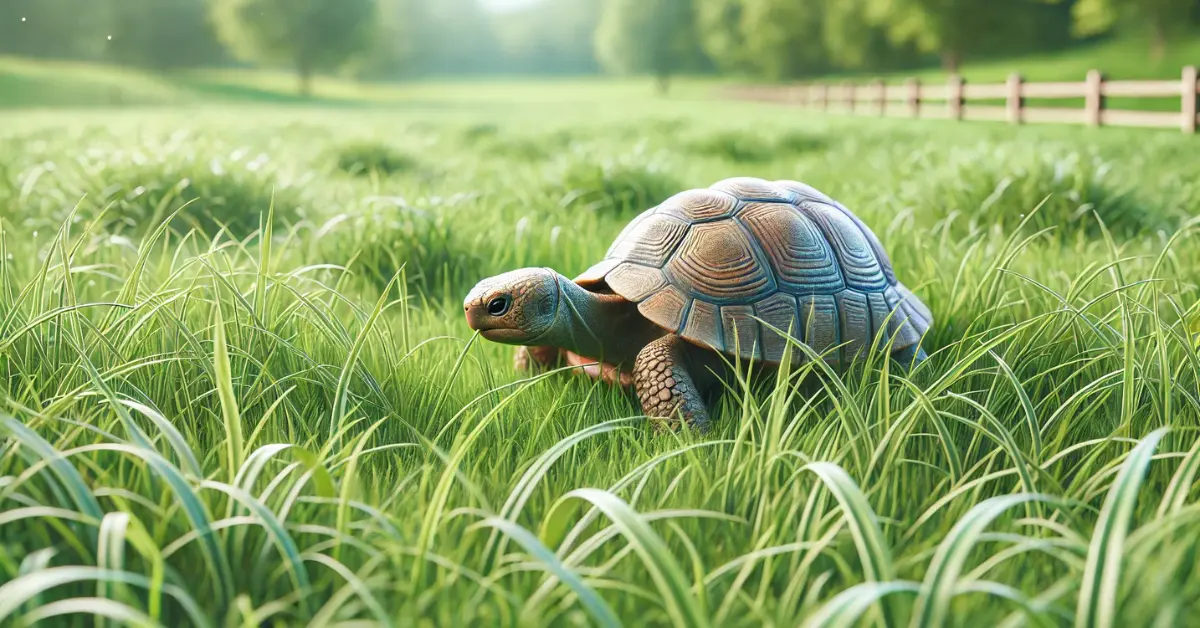Turtles are amazing animals with some cool survival skills. But have you ever wondered, how long can a turtle live without food? Knowing the answer is important if you want to take good care of your turtle. In this blog, we’ll talk about how turtles survive without food, how to feed them right, and what you can do to keep your turtle healthy.
Table of Contents
ToggleUnderstanding Turtle Metabolism
Cold-Blooded Nature and Energy Saving
Turtles are cold-blooded, which means their body temperature changes with the temperature around them. Because of this, they don’t need to eat as much to stay warm. This helps them save energy, so they can go longer without food compared to other animals. Turtles can live without eating for a while because they use their energy slowly.
Seasonal Changes in Turtle Appetite
Turtles eat more when it’s warm because their bodies are more active. But when it gets cold, their bodies slow down, and they eat less or even stop eating. In winter, many turtles can survive with very little energy, almost like they are sleeping during the cold months.
Factors That Affect a Turtle’s Metabolism
- Different Species: Different types of turtles have different needs. Some turtles, like the desert tortoise, can go without food longer because they live in tough conditions. Other turtles might need to eat more often.
- Age and Size: Younger turtles need more food because they are growing. Older and bigger turtles can go longer without eating because their bodies don’t need as much energy.
- Environment: The temperature, humidity, and water around a turtle affect how much it needs to eat. In colder places, turtles can slow down their bodies and survive longer without food.
How Long Can Different Turtle Species Survive Without Food?

Turtles can survive without food for different amounts of time depending on their type and size. Let’s look at the differences between water turtles and land turtles, small turtles and large turtles, and specific examples of how long certain turtles can go without eating.
Aquatic Turtles vs. Land Turtles
Water turtles and land turtles live in different environments, which affects how long they can go without food. Here’s a simple comparison:
| Type of Turtle | How Long Without Food | Why |
| Water Turtles | Weeks to a few months | Water turtles can cool down in water, which slows their bodies and helps them survive longer without food. |
| Land Turtles | Months to even a year | Land turtles, like box turtles, move and eat less during colder months, so they can survive longer without food. |
Small Turtles vs. Large Turtles
The size of a turtle also matters when it comes to how long it can live without food. Bigger turtles usually last longer than smaller turtles.
| Size of Turtle | How Long Without Food | Why |
| Small Turtles | Weeks to a few months | Small turtles use up energy faster and don’t have much stored, so they need to eat more often. |
| Large Turtles | Months to even a year | Big turtles have more stored energy, so they can survive longer without food. |
Examples of Turtle Species and Their Fasting Abilities
Here are some examples of different types of turtles and how long they can survive without food:
- Red-eared Sliders: These common pet turtles live in water and can survive for several weeks without food. But they still need clean water during this time.
- Box Turtles: Box turtles live on land and can go for several months without food, especially in the cold when they are almost like sleeping.
- Sea Turtles: Sea turtles can survive for months without food because their bodies slow down, especially in colder water. But they usually eat regularly when food is around.
Factors Influencing a Turtle’s Ability to Fast
Turtles can go without food for a while, but some things affect how well they do it. Let’s look at these important factors:
Health Status and Body Condition
A turtle’s health is very important when it comes to fasting. Healthy turtles with good body weight can go longer without eating. But turtles that are already sick or thin might not survive as long without food.
Hydration Levels
Water is key for turtles, especially when they aren’t eating. Turtles that have clean water can stay hydrated, which helps them go longer without food. If they don’t get enough water, their health can get worse quickly, even if they aren’t eating.
Temperature and Hibernation
The temperature around a turtle makes a big difference in how long it can go without food. In cold weather, many turtles slow down and almost hibernate, which means they don’t need much food. But if a turtle is in a warm place, it will need food sooner because its body stays active.
Stress and Environmental Factors
Stress can also affect how well a turtle handles fasting. A calm and safe environment helps turtles go without food for longer. But if a turtle is stressed, like being moved or hearing loud noises, it might need food sooner. Stress can also make turtles weaker, which isn’t good when they aren’t eating.
Signs of Hunger and Malnutrition in Turtles
It’s important to know when a turtle is hungry or not getting enough food. Watch for these signs:
Physical Symptoms to Watch For
- Weight Loss: One of the first signs of hunger is weight loss. If a turtle’s shell looks sunken or it feels lighter, it might be hungry.
- Sunken Eyes: If a turtle’s eyes look sunken or dull, it could be a sign that it needs food.
- Dry Skin or Shell: A turtle that isn’t getting enough food might have dry skin and a rough, dry shell.
Behavioral Changes Indicating Hunger
- Increased Activity: A hungry turtle might move around more, searching for food.
- Aggression: Some turtles get more aggressive when they are hungry, especially if they are near other turtles.
- Begging for Food: Turtles used to being fed by people might come to the front of their tank or enclosure and seem to beg for food.
Long-Term Effects of Food Deprivation on Turtle Health
Not eating for too long can hurt a turtle’s health. Long-term hunger can cause:
- Weak Immune System: Without enough food, a turtle’s immune system can get weaker, making it easier for them to get sick.
- Organ Damage: If a turtle goes too long without food, its organs might start to fail because they aren’t getting the nutrients they need.
- Shortened Lifespan: If a turtle is hungry for too long, it might not live as long as it should.
Responsible Turtle Care: Feeding Guidelines
Taking care of a turtle means knowing how and when to feed them properly. Let’s explore how often different turtles should eat, what a balanced diet looks like, and why it’s important to feed them just the right amount.
Optimal Feeding Frequency for Different Turtle Species
Different types of turtles have different feeding needs. Here’s a quick guide:
- Aquatic Turtles (like Red-eared Sliders): These turtles should be fed every day when they are young. As they get older, you can reduce feeding to every other day.
- Land Turtles (like Box Turtles): Young box turtles should be fed every day, while adults can be fed every other day or three times a week.
- Sea Turtles: While you can’t keep sea turtles as pets, in the wild, they feed regularly, usually eating a variety of foods like jellyfish, algae, and small fish.
Balanced Diet Essentials for Turtles
Just like people, turtles need a balanced diet to stay healthy. Here’s what a balanced diet looks like for most turtles:
- Protein: Turtles need protein to grow and stay strong. Younger turtles need more protein, which they can get from insects, worms, and fish. Older turtles still need protein but in smaller amounts.
- Vegetables and Fruits: Many turtles love leafy greens like kale, spinach, and lettuce. Some turtles also enjoy fruits like berries and apples, but these should be given in moderation.
- Calcium: Turtles need calcium to keep their shells strong. You can give them calcium-rich foods like cuttlebone, or use a calcium supplement.
- Commercial Turtle Food: There are many types of commercial turtle food available that provide a good mix of nutrients. Just make sure it’s high-quality and suits the specific type of turtle you have.
The Importance of Proper Nutrition vs. Overfeeding
Feeding your turtle the right amount is just as important as feeding them the right foods. Here’s why:
- Proper Nutrition: Giving your turtle a balanced diet helps them grow, keeps their shell strong, and boosts their immune system. It’s important to provide a variety of foods to meet all their nutritional needs.
- Avoid Overfeeding: While it might be tempting to feed your turtle extra, overfeeding can lead to obesity and other health problems. Turtles that are overfed can develop fatty liver disease, and their shells can grow too quickly, leading to deformities. Stick to the feeding guidelines and watch for signs that your turtle is eating too much.
Read more: How Long Can a Turtle Go Without Eating?
Conclusion
Turtles are amazing animals that can go without food for a long time. But how long can a turtle live without food depends on things like its species, size, and environment. Knowing these factors is important if you want to keep your turtle healthy.
At Theturtles.info, we believe in taking good care of turtles. Feeding your turtle the right amount of a balanced diet is very important. Giving them too much or too little food can cause health problems. So, it’s important to know how to feed your turtle properly. By understanding how long your turtle can live without food and giving them the right nutrition, you can help your turtle live a long and healthy life.
Remember, taking good care of your turtle is key. For more tips and advice, visit Theturtles.info to learn more about keeping your turtle happy and healthy.
FAQs: How Long Can a Turtle Live Without Food
Q1: How long can a pet turtle live without food?
A: A healthy adult pet turtle can live without food for several weeks to a few months, depending on its species, size, and environment. However, it’s important to ensure the turtle has access to clean water during this time.
Q2: Does the type of turtle affect how long it can survive without food?
A: Yes, the type of turtle does matter. Aquatic turtles like Red-eared Sliders can typically survive for weeks to a few months without food, while land turtles like Box Turtles can sometimes go for several months, especially if they are in a state of brumation (a type of hibernation).
Q3: Can young turtles survive as long without food as adult turtles?
A: No, young turtles need more frequent feeding because they are still growing. They have a faster metabolism than adult turtles, so they can’t survive as long without food.
Q4: What happens if a turtle goes too long without food?
A: If a turtle goes too long without food, it may start to lose weight, become weak, and develop health problems like a weakened immune system or organ damage. Long-term food deprivation can shorten a turtle’s lifespan.
Q5: How do I know if my turtle is hungry?
A: Signs that your turtle is hungry include increased activity, trying to get your attention (like coming to the front of the tank), and showing aggression. Physical signs of hunger include weight loss, sunken eyes, and a dry shell.

